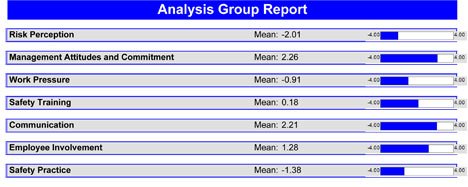Bill Dixon is researching safety culture on construction sites as part of his PhD. In the second of two articles, he outlines his research.
Over the past four years, I’ve undertaken research to try to create an academically-rigorous, accurate and easily administered system that is also cheap and easy-to-use for measuring safety culture on construction sites.
Tools that try to achieve all of these are commercially available but are often very expensive, are difficult to administer and I would argue have little academic rigour. Few could be easily administered on-site by a busy construction team.
The system/tool under development will enable construction teams to measure the safety culture before and after any intervention programmes are implemented on site.
By measuring the before state, a targeted intervention programme can be honed and better targeted. By measuring the after state, employers should be able to assess its success (or failure) and decide if the time and money invested could be better targeted in future programmes.
To measure safety culture, I based my research on the seven key facets described earlier. By analysing questionnaires used by six researchers[*], I created a single questionnaire.
Six sets of questions were selected from differing countries and industries to present a viable, cross-section of sample questions. Looking for commonalities in the questionnaires compiled by the six researchers, I came up with 46 questions that summarised the common threads and covered the seven key facets.
For each set of six questions, the percentage of questions per facet matched closely.
The overall percentages were as follows:
-
management attitudes and commitment (27 per cent);
-
safety training (2 per cent);
-
communications (14 per cent);
-
safety practice (16 per cent);
-
risk perception (14 per cent);
-
employee involvement (14 per cent); and
-
work pressure (14 per cent).
A focus group was used to hone the proposed questionnaire.
The finished questionnaire, comprising 46 questions, elicits respondents’ feelings, which are indicated on a Likert scale (strong negative to strong positive). However, a list of questions does not solve the problem of how to develop a system/tool for simple, cheap, accurate and rigorous use by a busy site team.
The first step was to sort out the data handling. On a large site of say, 500 workers, a 20 per cent uptake would result in 100×46 question responses that need collating. This would have been time consuming and error prone.
As the research’s main focus was to create a simple procedure then manually inputting each individual piece of data was out of the question. Optical mark recognition (OMR) software used instead to automatically analyse the data.
This software could be easily programmed to read the responses from any bespoke questionnaire. The programming is intuitive to most users of Windows-type software as dragging rubber boxes and completing pop-up dialogue boxes was simple. Once the initial setup information is given to the software then it can be saved for re-use on other projects.
On site, the process required workers to complete the questionnaire. The responses were scanned using the site’s multi-sheet scanner and saved as a PDF. An additional benefit was that PDF files generated on-site could be emailed to the head-office for centralised processing. This meant that a company-wide or site-specific analysis could be obtained.
Testing of the questionnaire’s initial design has now been carried out on two busy sites in England and the confidential results shared with the site teams. The period before the second round of field trials was used to develop the questionnaire’s design to obtain higher OMR accuracy rates.
The default output format from the process is a simple spreadsheet. However, one big added advantage that this OMR software brought was its in-built reporting graph capability.
The software produces several default graphs, but the most useful one shows the aggregated scores of each of the seven main facets of safety (see below), which managers can use to target resources more effectively.

Until the next development tranche is found, then the construction industry must make the best use of the technological, systems and culture fields that it currently uses. It’s essential that they are used fully and efficiently.
The intelligent use of company resources and information is vital for a competitive business to thrive and workers must be kept safe.
It is hoped that this research will enable companies, over time, to better assess the safety culture intervention strategies that they choose to implement. If we look back 20 or 30 years, the construction industry has come a long way in making improvements.
If we can now target and measure our intervention strategies, what will the next 30 years bring?
(Author details) Bill Dixon works as an EHS manager in Shanghai and is a former HSE inspector. His PhD is published later this year. To find out more about the research, email: [email protected]
Bill Dixon’s research can be accessed at: http://www.bl.uk/reshelp/findhelprestype/theses/
[*] Mullen, Zohar, safety climate tools Prepared by MaTSU for the Health and Safety Executive, Nordic Safety Climate Questionnaire, The Occupational Safety and Health Council of Hong Kong, Health and Safety Laboratory — these gave a variety of countries and industries.
The Safety Conversation Podcast: Listen now!
The Safety Conversation with SHP (previously the Safety and Health Podcast) aims to bring you the latest news, insights and legislation updates in the form of interviews, discussions and panel debates from leading figures within the profession.
Find us on Apple Podcasts, Spotify and Google Podcasts, subscribe and join the conversation today!


